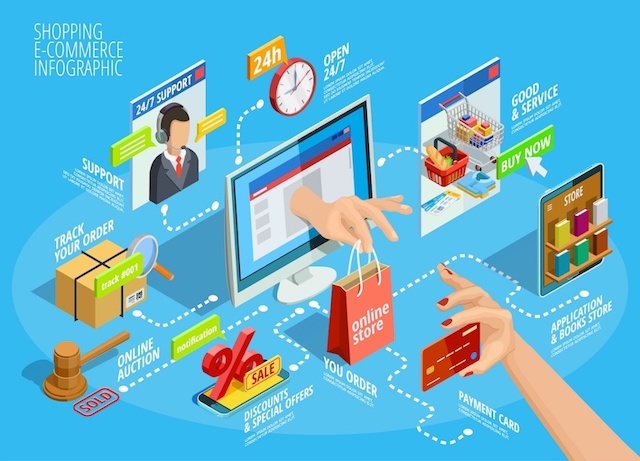Some call it the "Amazon Effect"
With the ubiquitous nature of eCommerce giants like Amazon and eBay, consumers are demanding simplified shopping, purchasing, and shipping processes.

A modern TMS can provide the access and benefits that have made the “Amazon Effect” famous.
- Reduces shipping costs - sometimes dramatically
- Provides consistent, efficient, and standardized workflows
- Proactively notifies customers on order status
- Simplifies the user experience from end-to-end
- Builds trust
It also helps eliminate damage and errors by automating and optimizing processes no matter what type of shipment is being handled.
More products + more volume = bigger margin for errors
The more business you are doing, the higher the potential for mistakes to be made. If you are still shipping manually or using a legacy TMS, inconsistencies in process fulfillment, billing, and multimodal tracking can consume a lot of resources.

Benefits a modern TMS can provide for your business:
1.Standardized processes between modes and carriers ![]()
Most TMS's are designed for a primary mode – either parcel or LTL, in which their features have a primary preference. The process for every mode is different, creating another inefficiency and widening the margin for error. A modern TMS is mode and carrier agnostic and treats all packages the same. This means that your internal protocols and processes can be standardized, and the buyer will have the same experience regardless of what they’ve bought or how it was shipped.
For instance, the customer may buy a large furniture item and smaller décor items in the same purchase. These items may come from different warehouses or suppliers and will arrive on different trucks. With a legacy TMS, rating, booking, dispatch, label generation, tracking, and billing would be different, but a modern TMS standardizes the process, reducing the margin for error and potential for lost revenue.
Efficient mode and route optimization ![]()
Small parcels are subject to transfer between modes. Without a way to track the item efficiently, late deliveries and/or loss can result. A modern TMS optimizes the route from point A to point B, assigning your parcel to the fastest possible route allowing you to meet your customer’s expectations.
TMS as a rating engine 
It’s no longer necessary to rate multi-carrier and cross-mode shipments manually. Your modern TMS searches the best rates available, improving and standardizing the rating process as well as the cost to the consumer. It also compares all shipment options, not just those available in the LTL module, and automates the process for consistent results each time.
Enhanced customer service and satisfaction ![]()
With the guarantee of a consistent experience every time they order, your customers will know exactly what to expect. No matter what size their item is or what mode or carrier it arrives by, the buying experience is predictable and the margin for error is greatly reduced. Customer service is also unified into a single interface, resulting in an overall reduction in CS calls and an increased NPS (net promoter score).
Returns can be processed concurrently ![]()
When you are shipping large volumes of small parcels, a greater incidence of returns is to be expected. You can handle outgoing shipments and incoming returns simultaneously with a modern TMS. This mitigates error and boosts efficiency while reducing the cost of manual returns processing.
Save money 
Maintaining a legacy TMS may be costing you more money, simply by virtue of having to operate several systems to support your changing needs. Many legacy systems are on their way out and have discontinued updates, necessitating custom coding or time-consuming workarounds to get the job done. Having a TMS that owns all of your shipping data is less expensive to purchase and manage rather than having separate systems and ERP modules that are hacked together.
Throughput in the distribution center is increased ![]()
With a modern TMS, processing in the distribution center is far more efficient. Bringing all processes together under one banner allows you to do more with less – meaning, you don’t need a bigger warehouse or staff.

Overall, a modern TMS is essential for parcel, LTL and white glove deliveries, giving your company the “Amazon Effect” and making it all look effortless. All this is accomplished while reducing errors and damage rates that directly impact your bottom line.
Click here to schedule a demo and discover the real impact a modern TMS can have on your business.
